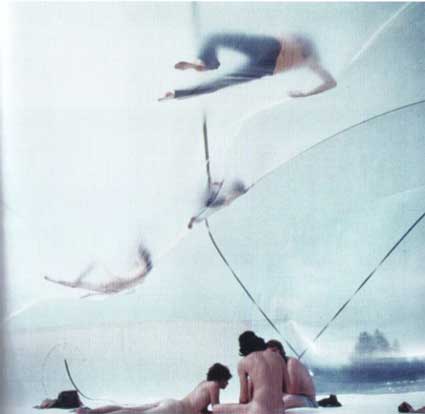Hello All,Thank you for posting images and thoughts on potential intervention sites as well as your bio's. What a fantastic group! We are very excited to be working with you.
At this point you should begin to assemble yourselves into groups of 3-5 people, ideally interdisciplinary teams. Carol, perhaps you can assist with this process if this does not come easily. Next the team should identify a preferred site or two for intervention, and a back up site.
Once you have identified a site, the team should produce a rough site analysis diagram. This diagram should summarize the site's opportunities and constraints: people traffic patterns, weather patterns (simple sun-shade analysis, wind direction), observed behaviors, unmet needs and opportunities for intervention.
Using these site analysis diagrams the team should come up with some goals and objectives for your intervention. What is the broad purpose and intent of your project? These should be listed as bullet points on a design concept sheet.
The next step is to begin to source materials for your intervention. Anything is up for grabs. Blaine and I are bringing some materials to experiment with inflatables but you could choose any material that you wish. Ideally we can pull something out of the waste stream, re purpose it, and then compost or recycle it when we are done. Scrap wood, cardboard, newspaper, sheet metal, found objects, etc. But don't be constrained by this goal. If your intervention is best realized using plastic, ballons, car tires, circuit boards, etc. that is OK too. You also may approach the intervention as a social sculpture and execute an event that uses no other materials than your own bodies, minds, and voices.
If team members want to propose individual interventions, or a come up with a proposal for a permanent intervention that is great. You may work on a physical or digital model. Just be prepared to assist the team with a physical intervention for our final class period on April 3rd.
The way we see the week unfolding is as follows (rough description, subject to modification):
March 27: First Class Meeting. Blaine and I will be ready with inflated Bushwaffle. We would like you to lead us out to your proposed intervention sites. At these sites we will explore the spacemaking potential of bushwaffe. We will describe some of our groundrules for working in public space - namely that we are out to create an atmosphere of playful inclusiveness, if we create a siutation that includes accidental participants and they walk away smiling we've done a good job;-)
March 28 - April 2: Blaine and I will be working in the studio testing inflatables and trying to evolve the design of Bushwaffle. At anytime during this week you are free to drop in on us, pitch an idea, ask questions, or ask for help with your intervention concept or fabrication.
During this week you should choose an intervention site, finalize your concept, and complete fabrication.
By wednesday evening teams should send us their intervention location. We will map out a route to follow for Fridays class and post to the blog Thursday evening.
Friday,April 3 - Intervention Day!: As a class we will proceed to each team's intervention site and witness, explore, experience the intervention. We will have 30- 40 minutes at each site. At the last site we will have a closing discussion.
Following the last class we would like each team to post documentation of their working process:models, thoughts, experiments, successes, failures, and the documentation of the final intervention. This may be with photos, drawings, videos. etc.
Rebar will review and comment on the class experience and create a webpage of the class projects on Bushwaffle.com and rebargroup.org.
And here is my bio:
John Bela directs Rebar with Matthew Passmore and Blaine Merker. As an artist, designer, and activist, John devises and executes tactical urban interventions intended to remix the way we occupy and inhabit urban space. Trained in art, science, and environmental design, John works with
CMG Landscape Architecture and
SF Victory Gardens designing and building public landscapes and urban gardens in San Francisco. John is described as an ideas volcano that has an unnatural ability to tap into concepts with broad cultural currency. A passionate urbanist, he simultaneously sees the way things could be and the humor and absurdity of what is.
John has taught Capoeria to villagers on the Osa Penisula of Costa Rica, drank magic potion and built medicinal plant gardens with Shamans in the Ecuadorian Amazon, and solo climbed granite spires in the Sierra Nevada. John travels and lectures internationally, most recently in Venice, Italy and Amsterdam, The Netherlands.
JB on tee vee: Watch Blair Randal, John Bela, Alice Waters, and Gavin Newsom interviewed by Jamie Durie of The Victory Garden—television's longest running gardening show—on PBS.Recent Lectures Featured Speaker. Sustainable Systems: 3 Local Solutions. Yerba Buena Center for the Arts, San Francisco. 8/27/08
Featured Speaker. Design Strategies and Conflict Resolution. The Design and Technology Department, San Francisco Art Institute. 11/19/08
Featured Presenter. Urban Farms Now. The Seed Fund in collaboration with SFMOMA A + D Forum 11/11/08
See you soon!



ferrate(III)-3D-balls.png)



.jpg)














